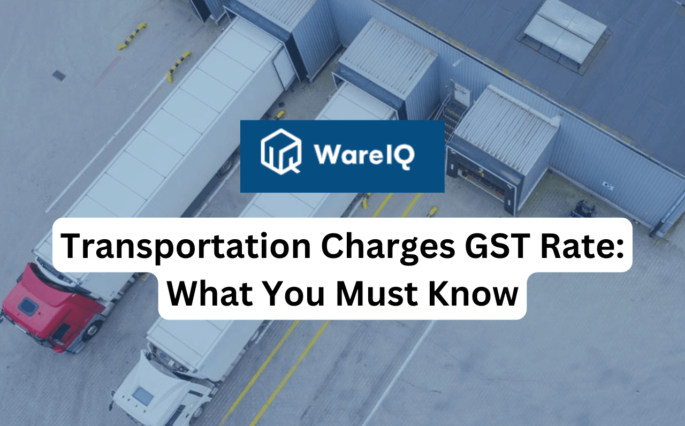Fulfillment Strategies for Online Footwear Retailers

The online footwear retail market has experienced significant growth in recent years, driven by the convenience of e-commerce and an increasing number of consumers opting to shop for shoes online. However, with this growth comes the challenge of efficiently managing the fulfillment process. Effective footwear fulfillment is crucial for maintaining customer satisfaction, minimizing returns, and optimising overall operational efficiency.
This article delves into the intricacies of footwear fulfillment, providing comprehensive strategies to enhance the process, addressing common challenges, and offering solutions to streamline operations. By mastering these strategies, online footwear retailers can ensure timely deliveries, reduce costs, and improve customer loyalty.
- What Is Footwear Fulfillment?
- Fulfillment Strategy for Footwear
- Challenges in Footwear Fulfillment
- Essential Things to Streamline for Footwear Fulfillment
- Conclusion
- FAQs About Footwear Fulfillment
- What is footwear fulfilment?
- What are the critical components of a successful footwear fulfilment strategy?
- What challenges do online footwear retailers face in fulfilment?
- How can technology improve footwear fulfilment?
- Why is demand forecasting necessary for footwear fulfilment?
- How can online footwear retailers manage high return rates?
What Is Footwear Fulfillment?
Footwear fulfillment encompasses the entire process of receiving, processing, and delivering shoe orders to customers. It involves several critical steps: inventory management, order processing, picking, packing, shipping, and handling returns. Unlike other products, footwear has unique challenges, such as a wide range of sizes, styles, and seasonal trends, necessitating specialised handling and storage solutions. Efficient footwear fulfillment ensures customers receive the correct size and style promptly, enhancing their shopping experience and reducing the likelihood of returns. This process is integral to the success of online footwear retailers, as it directly impacts customer satisfaction and brand reputation.
Fulfillment Strategy for Footwear
Developing a robust fulfillment strategy for footwear involves several key components:
- Inventory Management: Implement an advanced inventory management system to track stock levels in real-time, forecast demand, and manage stockouts and overstock situations.
- Efficient Warehousing: Design warehouse layouts to optimise space utilisation and facilitate easy access to different shoe sizes and styles. Use vertical storage solutions and clearly label sections for faster picking.
- Order Processing Automation: Use automation tools to increase accuracy and speed in order processing. Automated systems can reduce human error and ensure orders are processed promptly.
- Accurate Picking and Packing: Employ barcode scanning and other technologies to ensure accurate order picking. Use appropriate packing materials to protect footwear during transit.
- Fast Shipping: Partner with reliable courier services to ensure fast and secure shipping. Offer multiple shipping options to cater to different customer needs.
- Returns Management: Develop a streamlined returns process to handle footwear returns efficiently. Ensure that returned items are inspected and restocked promptly.
- Customer Communication: Automated notifications will keep customers informed at every stage of their order. Clear tracking information and responsive customer support will also be provided.
By implementing these strategies, online footwear retailers can improve their fulfillment processes, increasing customer satisfaction and loyalty.
Challenges in Footwear Fulfillment
Footwear fulfillment comes with its own set of challenges:
- Size Variability: Managing a wide range of sizes for each style can complicate inventory management and picking processes.
- Seasonal Demand: Footwear sales can be highly seasonal, requiring precise demand forecasting and inventory management to handle peak periods.
- High Return Rates: Footwear often has high return rates due to fit issues, which can strain the returns management process.
- Storage Requirements: Shoes require significant storage space, especially given the variety of styles and sizes.
- Packaging: Ensuring that footwear is packaged securely to prevent damage during transit is essential but can be complex.
- Shipping Costs: Due to their bulk, shoes can be expensive to ship, mainly for expedited deliveries.
- Supply Chain Disruptions: Delays in receiving stock from manufacturers or suppliers can impact the fulfillment process and customer satisfaction.
Addressing these challenges requires careful planning and the implementation of efficient fulfillment strategies.
Essential Things to Streamline for Footwear Fulfillment
To streamline footwear fulfillment, focus on the following key areas:
- Demand Forecasting: Use data analytics to predict demand trends and adjust inventory levels accordingly. This helps in avoiding stockouts and overstocking.
- Warehouse Optimization: Regularly review and optimise the warehouse layout to ensure efficient space utilisation and ease of access for picking and packing.
- Technology Integration: To enhance efficiency, implement advanced technologies such as Warehouse Management Systems (WMS), automated picking solutions, and real-time inventory tracking.
- Quality Control: Establish strict quality control measures to ensure that each order is picked and packed accurately, reducing the risk of returns due to errors.
- Flexible Shipping Options: Offer various shipping options, including express and standard delivery, to meet different customer preferences.
- Efficient Returns Process: Develop a hassle-free returns process with clear instructions for customers and a system for quickly processing and restocking returned items.
- Customer Service: Provide excellent customer service to handle inquiries and issues promptly, ensuring a positive shopping experience.
By streamlining these aspects, online footwear retailers can enhance their fulfillment efficiency, reduce costs, and improve customer satisfaction.
Download resource : Tailored Fulfillment Solution for Modern Footwear Brands by WareIq
Conclusion
Effective footwear fulfillment is a critical component of success for online footwear retailers. By understanding the unique challenges associated with handling, storing, and shipping footwear, businesses can develop targeted strategies to streamline their operations. Each aspect is vital in ensuring timely and accurate fulfillment, from advanced inventory management and warehouse optimisation to leveraging technology and improving customer communication.
Mastering footwear fulfillment requires a comprehensive approach that addresses the specific needs of the footwear industry. By implementing best practices and continuously refining processes, online retailers can enhance operational efficiency, reduce costs, and provide an exceptional customer experience. This drives customer satisfaction and loyalty and positions the business for sustained growth in the competitive e-commerce landscape.
Suggested read: Functions of Retailing in Modern Business Operations
FAQs About Footwear Fulfillment
What is footwear fulfilment?
Footwear fulfilment refers to managing the receipt, storage, picking, packing, shipping, and return handling of shoe orders in an e-commerce environment. This includes inventory management, order processing, and ensuring accurate and timely customer delivery.
What are the critical components of a successful footwear fulfilment strategy?
A successful footwear fulfilment strategy includes efficient inventory management, optimised warehouse layout, automated order processing, accurate picking and packing, fast and reliable shipping, streamlined returns management, and effective customer communication.
What challenges do online footwear retailers face in fulfilment?
Online footwear retailers face challenges such as managing a wide range of sizes, handling seasonal demand fluctuations, high return rates, significant storage space requirements, secure packaging needs, high shipping costs, and potential supply chain disruptions.
How can technology improve footwear fulfilment?
Technology can improve footwear fulfilment by providing real-time inventory tracking, automating order processing, optimising warehouse operations, enhancing picking accuracy through barcode scanning, and offering advanced shipping and tracking solutions.
Why is demand forecasting necessary for footwear fulfilment?
Demand forecasting is vital for footwear fulfilment because it helps retailers predict sales trends, plan inventory levels, and prepare for peak demand periods. Accurate forecasting reduces the risk of stockouts and overstocking, ensuring customer demand is met efficiently.
How can online footwear retailers manage high return rates?
Online footwear retailers can manage high return rates by implementing a streamlined returns process, providing clear return instructions, inspecting and restocking returned items promptly, and offering excellent customer service to address any issues.








